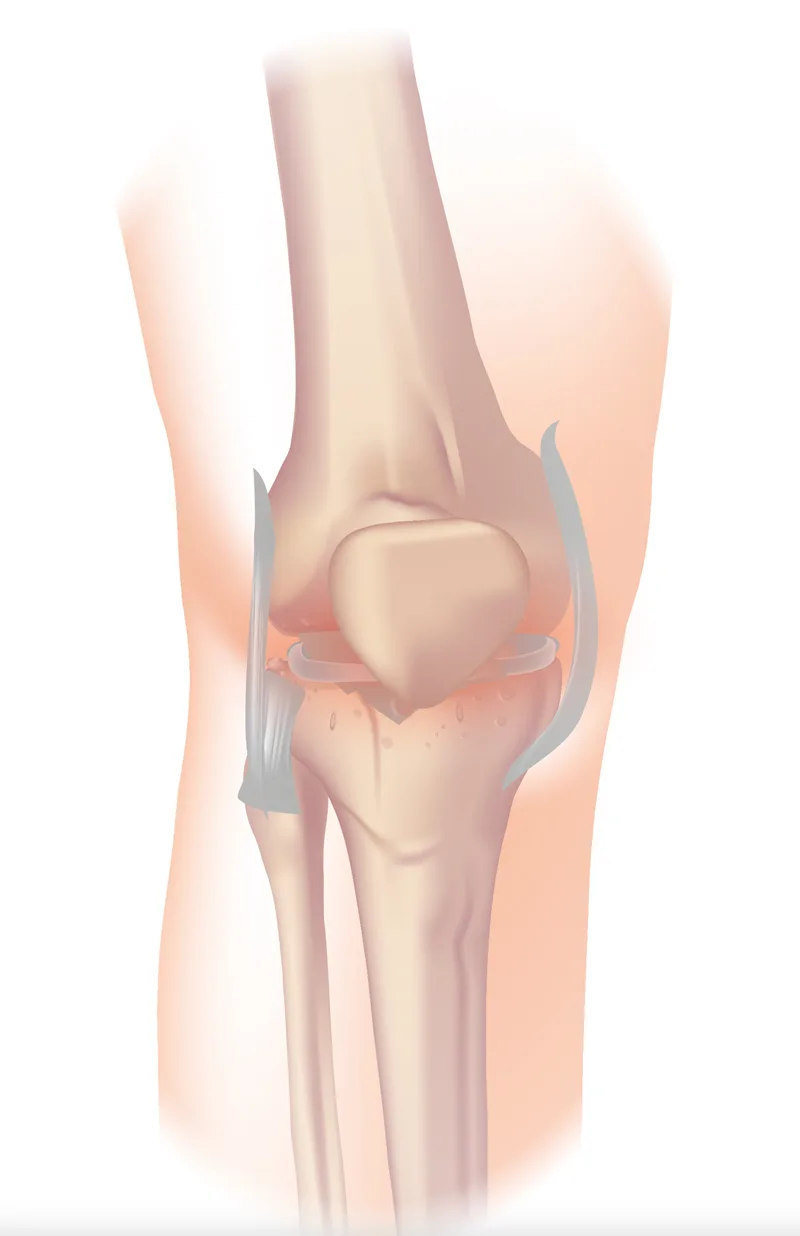Knee Arthritis
Learn the signs and treatment options for improved mobility
Knee Injury, or Knee Arthritis?

Onset of Pain
Arthritis pain typically emerges slowly, evolving over weeks, months, or even years, often without a clear initiating event. In contrast, injury-related pain is usually immediate and directly traceable to a specific incident, such as a twist, fall, or direct impact to the knee.
Type of Pain
Arthritis pain is usually a dull ache with stiffness, often described as a deep soreness that can limit flexibility. This discomfort tends to be more pronounced after periods of inactivity, such as first thing in the morning or after sitting for extended periods. In contrast, injury pain is typically sharp and immediate, related to specific damage of ligaments, tendons, or cartilage.
Associated Symptoms
Types of Knee Arthritis
Rheumatoid Arthritis
Psoriatic Arthritis
Gout Arthritis
Post-traumatic Arthritis
Procedures and Treatments
Genicular Artery Embolization
Platelet-Rich Plasma (PRP)
PRP therapy for knee arthritis involves injecting a concentration of the patient’s own platelets into the affected knee to stimulate healing and reduce pain and inflammation.
Ultrasound-Guided Injections
Ezell Askew, MD
Dr. Askew is proficient in performing a wide range of procedures, including Botox Therapy for various pain syndromes, Spine Neuromodulation, Intrathecal Drug Pump Placement, Carotid Stenting, Endovenous Laser Therapy for varicose veins, and numerous pain services such as Epidural Steroid Injections and Plexus Blockades.
He treats low back pain, vertebral compression fractures, osteoarthritis, rheumatoid arthritis, spinal cord injuries and spaciticy, sports injuries, pelvic venous congestion, and offers uterine fibroid embolization.

Why Monterey Bay Vascular?
Everyone deserves to live a long, happy life. Vascular disease may lead to limb loss and other life-threatening conditions such as pulmonary embolism. Our licensed vascular surgeon uses state-of-the-art tools and technology to tackle all problems related to your vascular system. Thanks to our vast wealth of experience, we also work with our patients to develop a unique solution that fits your needs. Contact us today to learn more about the vascular treatments we offer and schedule an appointment today!